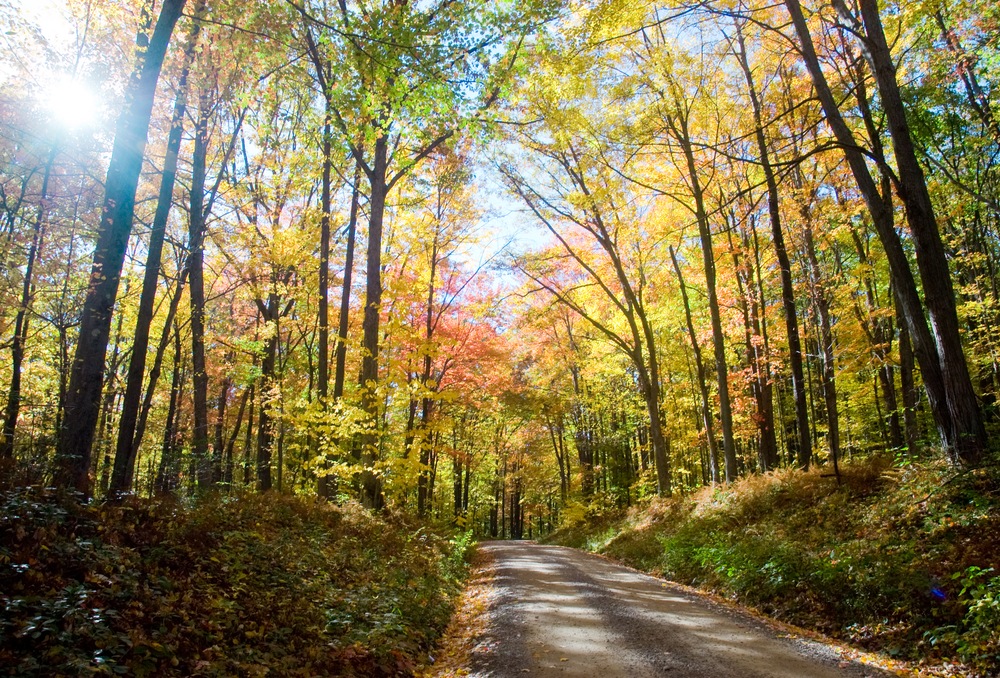
ShutterstockRoads carved through Pennsylvania’s forests cause habitat fragmentation and reduce biodiversity.
Frackers don’t just foul the air and the water — they trample nature and carve up ecosystems into inadequate little pieces.
That’s the message coming out of the U.S. Geological Survey, which studied aerial photographs of a handful of Pennsylvania counties where gas companies are using hydraulic fracturing to tap deposits in the Marcellus Shale. The survey’s analysis revealed sweeping damage and forests fragmented by new well pads, roads, and pipelines.
Jason Bell, a member of Marcellus Outreach Butler, told the Valley News Dispatch that the new study offers yet another example of why more careful regulation of the fracking boom is needed. “Often we don’t get a bird’s-eye view of what’s happening,” he said. “It’s easy to see one or two wells and think it’s having isolated effects.”
Here’s what the boom looks like when viewed from above. “Before” shots are on the left, “after” on the right:

USGSExamples of how drilling permits have led to the fragmentation of habitat in Pennsylvania’s Washington County. Click to embiggen.
In Butler County alone, the study found that fracking and conventional drilling — and the road-building required to service 109 drilling sites — had disturbed 325 acres of forest by 2010. Compared to a decade earlier, there were 36 more patches of forest in the county, and the average size of each patch was smaller — a change that the researchers said was mostly due to the drilling boom.
Even Beaver County, which is relatively untouched by frackers save for a couple drilling sites in its northeastern corner, endured 13 acres of disruption during the same period. Forests in Lackawanna and Wayne counties were also heavily affected by fracking despite being home to a small number of drilling wells.
It’s not just the acreage of disturbance that causes concern. It’s what all that drilling and road building do to the forests in between. Whenever habitat is broken up into smaller pieces, the theory of island biogeography tells us that the area’s biodiversity plummets. That’s because some wildlife can only survive deep in the woods — far away from its edges.
“Landscape disturbance can have a major impact on ecological resources and the services they provide,” USGS researcher Lesley Milheim said in a statement.



